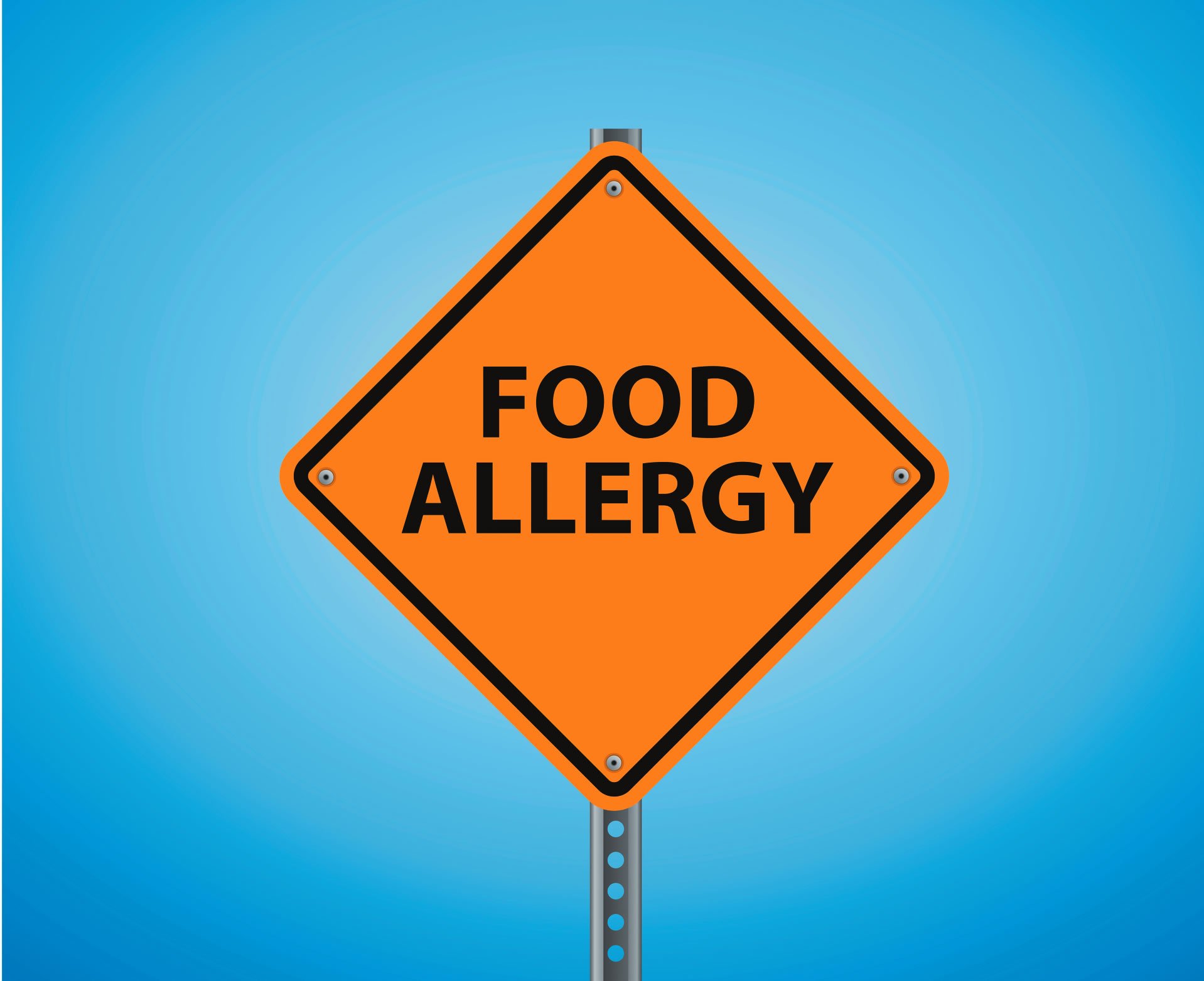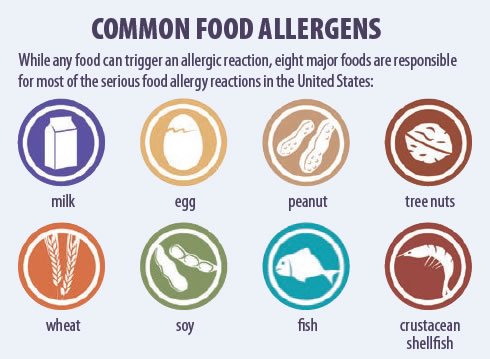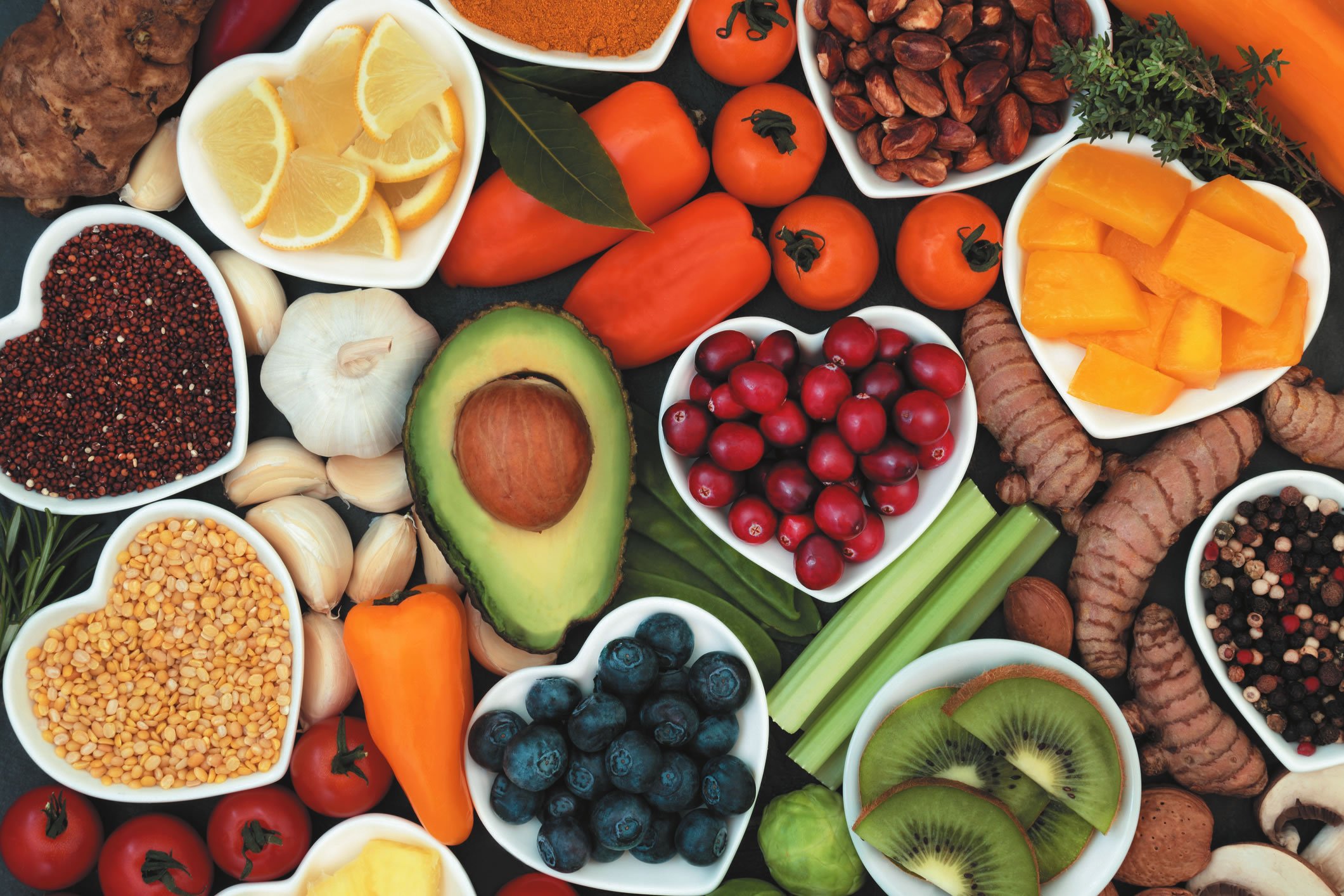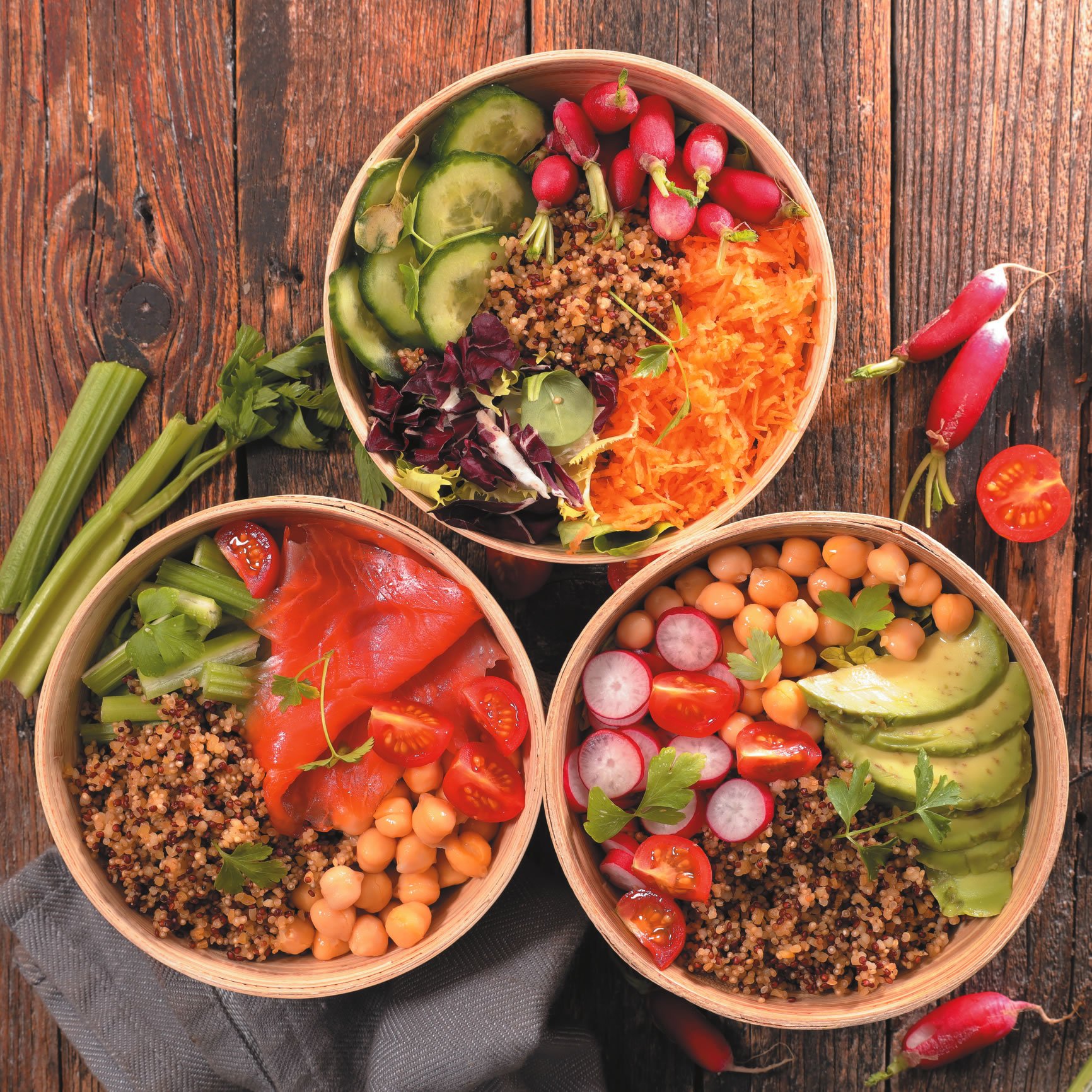Image © monkeybusinessimages | Getty Images

When gathering together for a holiday, or any other group event, people may bring different dietary needs to the table. In addition to varying taste preferences, individuals may have dietary restrictions for medical, religious, or even moral reasons, or they could be following a particular plan they believe will support health or weight loss. Before undertaking preparing food for a group, it can be helpful to have a basic understanding of some of the most common dietary restrictions.

Food Allergy: An allergic reaction to a food occurs when the body’s immune system mistakes a harmless food protein for a dangerous invader and mounts an immune response. According to the Food Allergy Research and Education (FARE) advocacy organization, researchers estimate up to 15 million Americans have food allergies, including one in 13 children under 18.
Food allergies may start in childhood or adulthood, and may occur in response to any food. A family history of food allergies, presence of non-food allergies (such as eczema or seasonal pollen allergies), and asthma all increase the likelihood of developing a food allergy. Symptoms range from mild (such as a few hives or mild abdominal pain) to severe (such as a life-threatening anaphylactic reaction). About 40 percent of children with food allergies have experienced a severe allergic reaction, and 200,000 Americans require emergency treatment for an allergic reaction to food every year.

Food allergies should be taken very seriously. In some cases, even touching a contaminated surface or inhaling microscopic particles of the food can trigger a life-threatening reaction. The only way to prevent a reaction is to completely avoid exposure to the offending food or foods, so, if any potential allergens will be included on the menu, caution must be taken to avoid cross-contamination during meal preparation and service. If processed or packaged products are a part of the meal, FARE recommends reading ingredient lists on every product to ensure each is allergen-free. Guests with food allergies should provide advice and guidance.
Image © minoandriani | Getty Images

Lactose Intolerance: Most humans are born with the enzyme lactase, which is needed to break down and digest the milk sugar lactose. After infancy, lactase enzyme levels often decline, and approximately 65 percent of people lose some ability to digest lactose. Populations with a long history of consuming unfermented milk products as an important food source have the lowest levels of lactose intolerance. For example, only about 5 percent of people of Northern European descent are lactose intolerant, as compared to more than 90 percent of adults of East Asian descent, since dairy products have not historically been a common part of the diet in East Asia.
Symptoms of lactose intolerance range from mild to severe bloating, stomach upset, and gas when milk or milk-products are consumed. All dairy products contain lactose, although levels are lower in yogurt and hard cheeses like cheddar or Swiss. People with lactose intolerance may not need to avoid lactose altogether. Research suggests that many people can consume the amount of lactose in about one cup of milk without symptoms or with only mild symptoms. For those who are sensitive to even small amounts of milk sugar, check labels for milk, lactose, and ingredients such as whey, curds, and dry milk solids. Butter contains extremely low levels of lactose and is likely to be tolerated. Lactose-free and reduced-lactose products are commonly available.

Celiac disease: This autoimmune disorder is estimated to affect one in 100 people worldwide. In this serious condition, exposure to gluten (a protein found in wheat, rye, barley, and any products that are made from them) triggers an immune response that attacks the lining of the small intestine. The resulting intestinal damage interferes with nutrient absorption and can lead to malnourishment. According to the Celiac Disease Foundation, if left untreated, celiac disease can lead to the development of other autoimmune disorders like type I diabetes and multiple sclerosis, as well as anemia, osteoporosis, infertility and miscarriage, neurological conditions like epilepsy and migraines, short stature, intestinal cancers, and an itchy skin rash called dermatitis herpetiformis. Celiac disease has a genetic component: individuals with a first-degree relative (like a parent or sibling) with celiac disease have a one in 10 risk of having the disease themselves.
People with celiac disease must avoid all traces of gluten in their food. When hosting a gluten-free guest, keep in mind that fruits, vegetables, and animal proteins without additives are naturally gluten-free, as are certain grains (like rice and quinoa). For more information on gluten-containing foods and where to look for hidden gluten, see the September 2018 issue of Tufts Health & Nutrition Letter.
The stress of making sure a meal or dish is gluten-free should not fall entirely on the host. The Celiac Disease Foundation recommends people with celiac disease communicate clearly with hosts ahead of time and consider bringing a gluten-free dish or two. The host should ensure, however, that there is no cross-contamination between gluten-free and gluten-containing dishes, for example via serving utensils.
Image © marilyna | Getty Images

Diabetes: Diabetes involves a breakdown in the system by which glucose enters cells to provide energy for body functions. Type 1 diabetes (previously known as juvenile diabetes because it was typically diagnosed in children) is an autoimmune condition in which the body does not produce insulin, the hormone that moves glucose from the bloodstream into the cells. In type 2 diabetes, which accounts for the vast majority of diabetes cases, the cells are not responding to circulating insulin the way they should (insulin resistance). One-and-a-half million people are diagnosed with diabetes every year in the U.S., and over 30 million Americans are living with this condition. Additionally, over 84 million Americans age 18 and older have pre-diabetes.
If not properly controlled, diabetes can lead to complications such as damage to the eyes, heart, blood vessels, nervous system, teeth and gums, feet, skin, and kidneys. The American Diabetes Association recommends balancing food with exercise and any prescribed medications to help keep blood glucose at healthy levels.
There is currently a range of varying dietary recommendations for people with diabetes. Most of these recommendations emphasize eating plenty of non-starchy vegetables, nuts and seeds, beans, minimally processed whole grains, fish, low-fat dairy products, and plant oils rich in unsaturated fats; eating red meat in moderation; and avoiding foods rich in refined starch and added sugars. “Some scientists believe that patients with diabetes should also avoid fruits,” notes Dariush Mozaffarian, MD, DrPH, dean of the Friedman School of Nutrition Science and Policy and editor-in-chief of Tufts Health & Nutrition Letter. “To me, the evidence supports strong health and metabolic benefits of eating all types of fruits, even in patients with diabetes.” People with diabetes should avoid regular soda and other sugar-sweetened beverages (as should people without diabetes, due to links to weight gain, diabetes, and heart disease). Hosts should be aware that some people with diabetes, particularly those on certain medications or insulin, may need to eat at a particular time to avoid dangerous drops in blood glucose levels. For more information on recommendations for patients with diabetes, see, “What to Eat with Diabetes,” in the February 2017 issue of Tufts Health & Nutrition Letter.
Image © ratmaner | Getty Images

Plant-Based Diets: Many people choose to reduce or eliminate intake of animal products as a way to improve health, for religious reasons, or due to concerns about animal welfare or the environment. Current data on the prevalence of plant-based diets in the U.S. is limited, but market research indicates this is a growing trend. Some examples of plant-based diets include:
- Lacto-ovo-vegetarian is the most common type of vegetarian diet. It includes dairy products and eggs.
- Lacto-vegetarians will eat dairy products, but not eggs, and ovo-vegetarian diets include eggs, but not dairy.
- Vegans do not eat any animal products, including honey.
- Whole foods diets typically include only minimally-processed foods, as close to their natural form as possible. Whole foods diets may include animal proteins.
All healthful vegetarian diets include whole grains, legumes (beans, lentils, peas, and peanuts), nuts, seeds, vegetables, and fruits, and limit refined grain products, sodium, and added sugars. Semi-vegetarian (or flexatarian) diets include the so-called pescetarian diet, which includes fish and shellfish, or pollotarian, which excludes red meats and may or may notinclude seafood.
Image © margouillatphotos | Getty Images

Other Dietary Restrictions: Guests without specific medical conditions like those described above may still have dietary restrictions. Weight-loss diets are common and varied (and quite often unsupported by quality research). The current trend involves the manipulation of intake of particular macronutrients like protein or carbohydrates.
Religious practice may also impact dietary intake. Jews who follow a kosher diet, for example, will avoid eating pork, shellfish, or meat or poultry that has not been slaughtered according to specific rules, and will not mix milk and meat (or, typically, poultry) at the same meal. Muslims who only eat foods that are halal (“allowed” or “permitted”) will eschew pork and the meat of animals not ritually slaughtered, along with alcohol. Some, but not all, Buddhists are vegetarians, and many Hindus choose to follow a lacto-vegetarian diet.
Personal taste may also present a challenge at mealtime. Young children, in particular, may go through phases of “picky eating” (acceptance of a limited variety of foods) and “food neophobia” (fear of new foods). A systematic review in the journal Childhood Obesity in 2016 stated that nearly all children experience picky eating or food neophobia to some degree. According to a 2015 article in The Journal of Nutrition, typical food neophobia has largely been considered a normal developmental stage that begins to appear during the toddler period, peaks during the preschool years, and is thought to dissipate over time.
Sometimes food preparation can increase acceptance of certain challenging food categories, such as vegetables. A recent study looking at vegetable preference in approximately 100 rural high school students suggested that flavoring vegetables with herbs and spices increases their palatability and acceptance. But cilantro may not be the best choice for a group of guests: It has an unpleasant soapy flavor to people who carry a certain gene variant.
Keeping It Simple: Trying to meet the dietary needs of a diverse group of guests could be challenging. One approach is to prepare a variety of dishes to provide options for everyone. “If you know you have a range of people to serve, consider preparing at least one gluten-free option, one lactose-free dish, and one meatless side,” says Robin Kanarek, PhD, professor of psychology and past interim dean of Tufts’ Friedman School of Nutrition Science and Policy. Buffet style serving can also offer choices, as can a potluck where each guest can bring (and share) a favorite, diet-friendly dish. (Just remember, if someone on the guest list has a food allergy it is important to keep that dish separate to avoid cross-contamination by serving implements.) Another useful strategy is to offer a variety of individual ready-to-eat ingredients and allow guests to assemble a personalized plate. This approach works well with whole-grain bowls, salads, tacos, flatbreads, wraps, and quesadillas.
Kanarek recommends remembering that gathering for a meal with friends and family is also about the company. “Food is important, but being together also matters,” says Kanarek. “In these increasingly busy days, meals are social times when we can all enjoy each other’s company, no matter what we eat.”
A food intolerance is not the same thing as a food allergy.
- A food intolerance response takes place in the digestive system. An allergic reaction to food involves the whole bodys immune system.
- In food allergies, the immune system identifies a food protein as an invader and produces antibodies to that protein. Food intolerance is often due to an enzyme deficiency (as in lactose intolerance), and does not produce this systemic immune response.
- Often, people with food intolerance can eat small amounts of the food without significant symptoms. People with food allergies must avoid even small amounts of the offending food.
- Symptoms of food intolerance can be very unpleasant. Symptoms of food allergies can be fatal.
- Allergies are diagnosed definitively by blood and/or skin tests. Although breath tests may help diagnose lactose intolerance and fructose malabsorption, there are often no definitive tests for food intolerances.
More information, recipe ideas, and meal planning tips can be found at the following Web sites:
Celiac Disease Foundation: celiac.org
Food Allergy Research & Education:
American Diabetes Association: diabetes.org
























